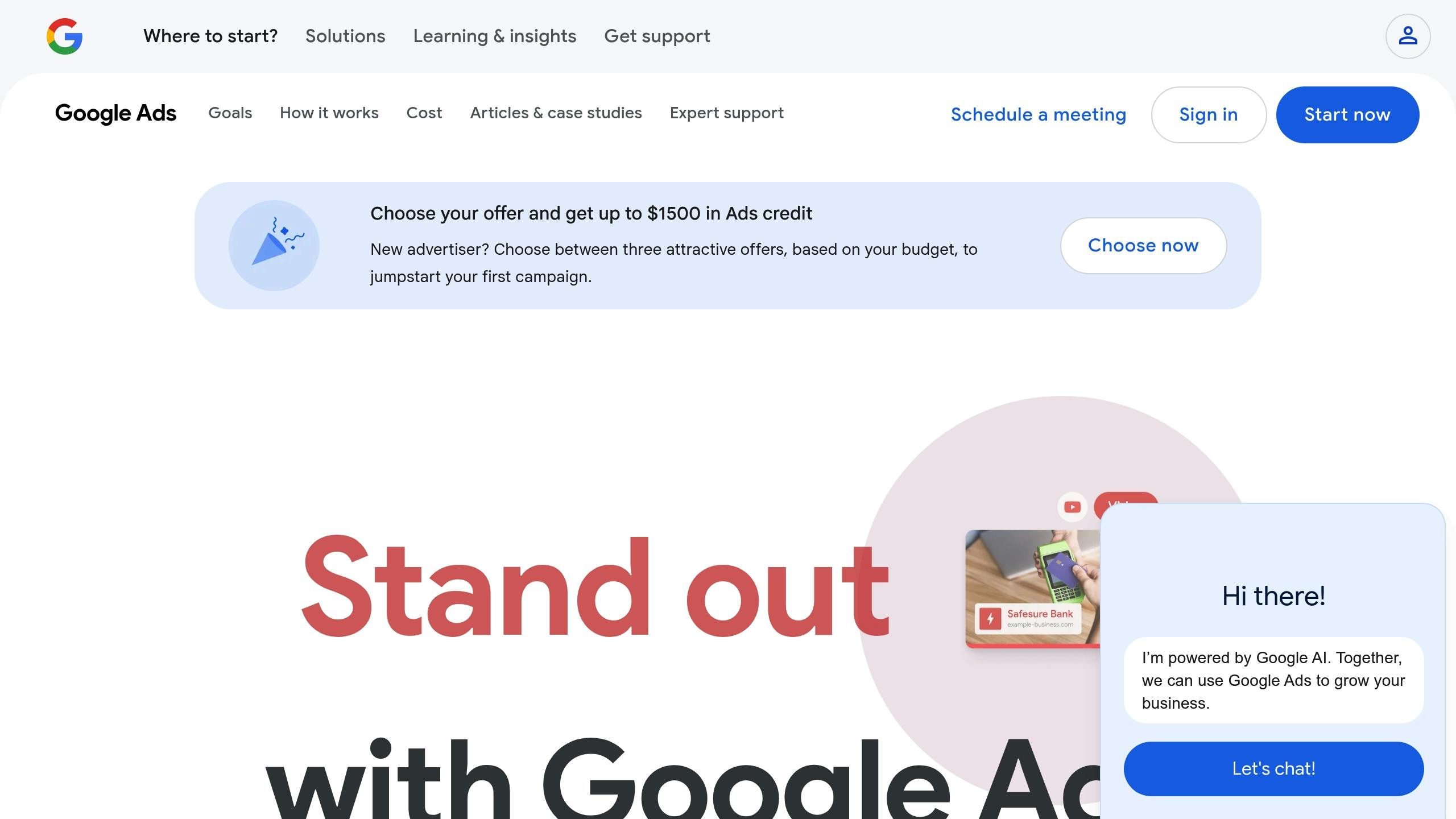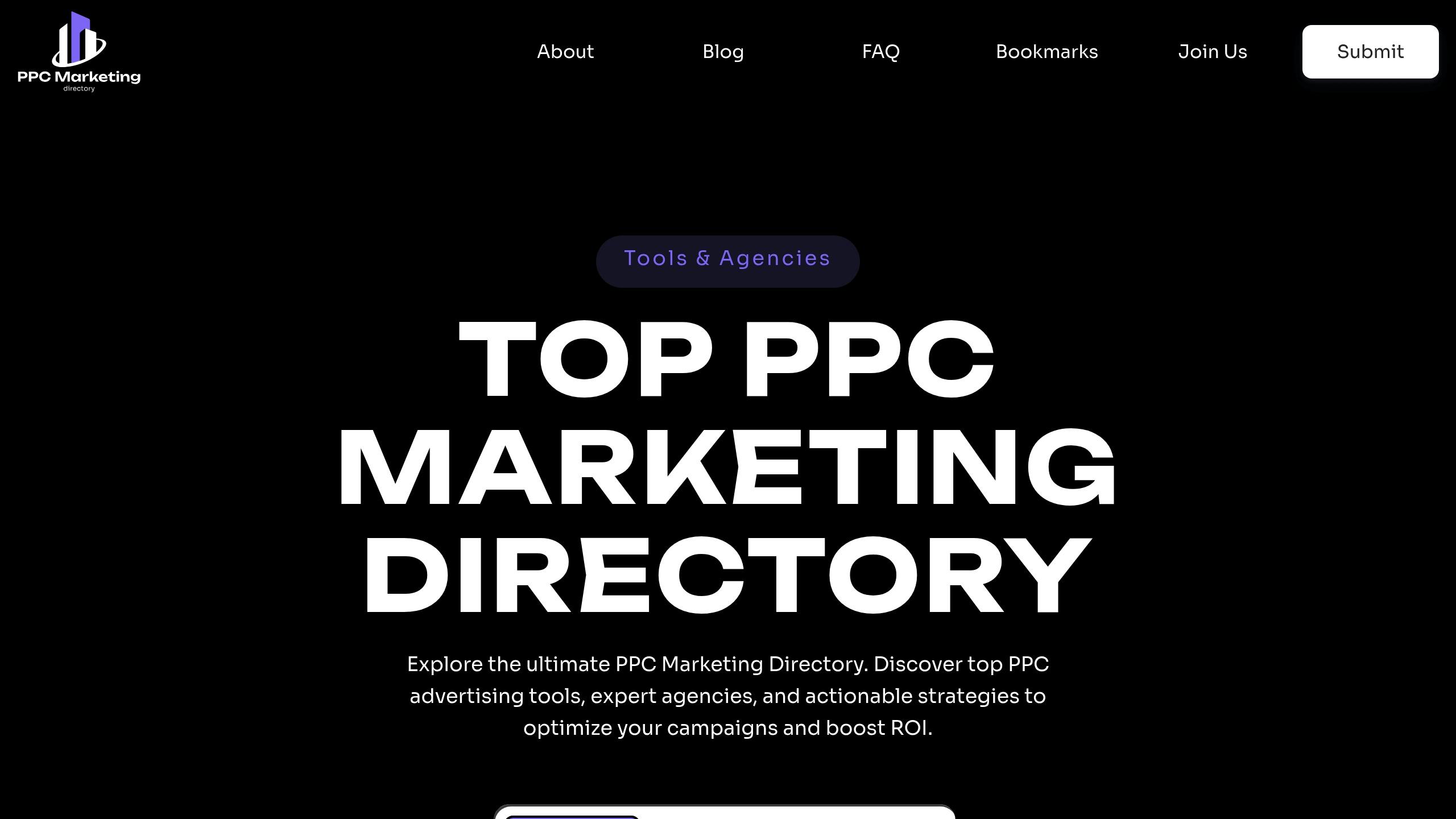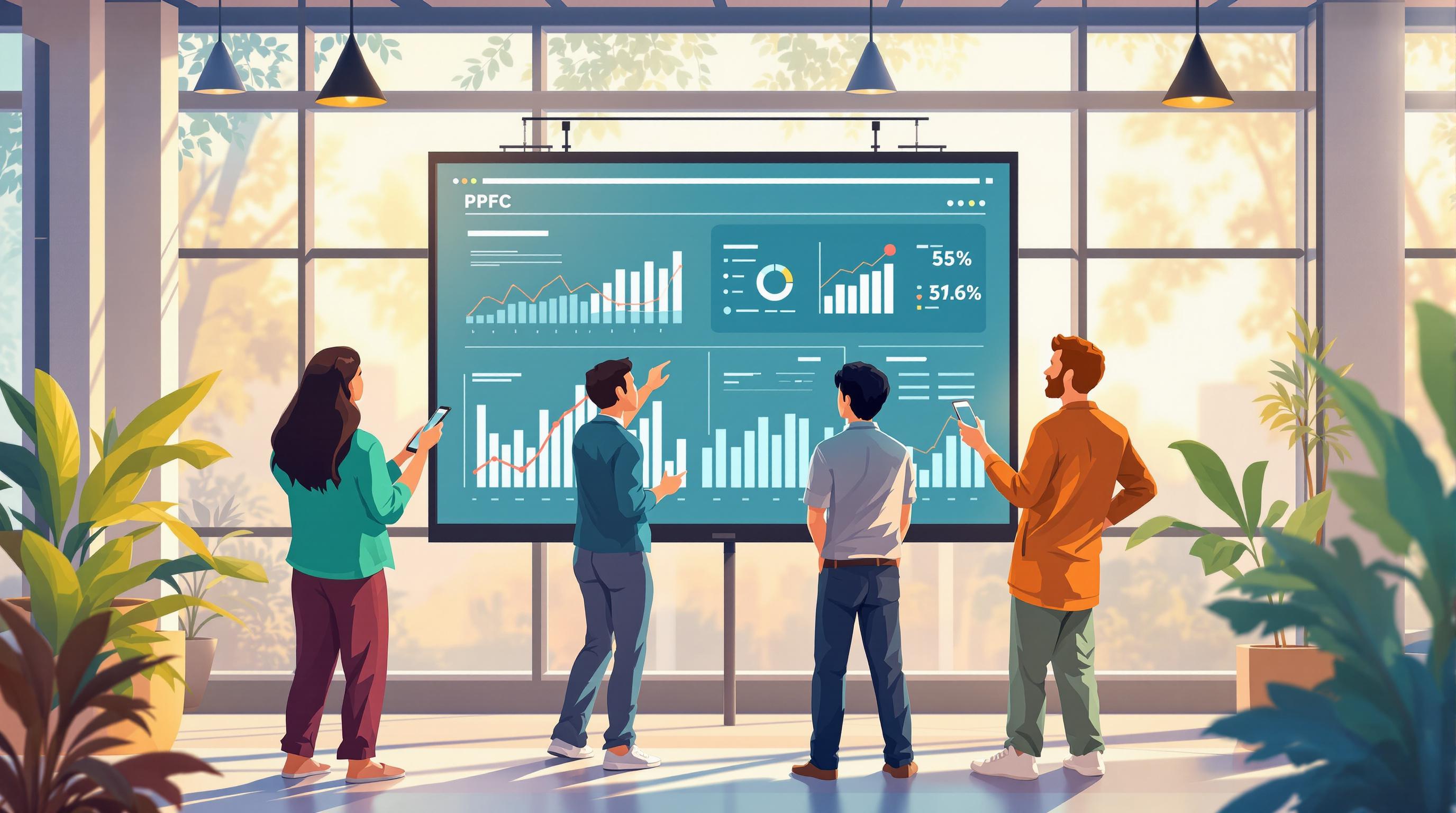Analyzing impression share trends is essential for improving your ad campaigns and staying competitive. Here's what you need to know:
-
What is Impression Share?
It's the percentage of times your ad shows up compared to the total eligible impressions. For example, if your ad is eligible to appear 1,000 times but only shows 600 times, your impression share is 60%. -
Why Monitor It?
Tracking impression share helps identify missed opportunities and optimize your campaigns. A higher impression share often leads to better visibility, more clicks, and conversions. -
Key Metrics to Watch:
- Search Impression Share: Ad visibility in search results.
- Display Impression Share: Ad visibility in the display network.
- Lost IS (Budget): Missed impressions due to limited budget.
- Lost IS (Rank): Missed impressions due to low ad rank.
-
How to Improve Impression Share:
- Budget Fixes: Increase daily budgets or reallocate funds to high-performing campaigns.
- Ad Rank Improvements: Focus on ad quality, landing page relevance, and bidding strategies.
- Targeting Updates: Use advanced targeting and optimize for mobile users.
-
Tools for Analysis:
Platforms like Google Ads, Semrush, and Optmyzr can help track and optimize impression share. Use these tools for automated reporting, competitor analysis, and bid adjustments.
Quick Tip: Aim for an impression share of 60-70% for standard campaigns. For branded terms, shoot for 90-100% visibility.
Understanding and improving impression share can make a big difference in your ad performance. Let’s dive deeper into the details!
Getting Your Impression Share Data
Finding Metrics in Google Ads

To access impression share metrics in Google Ads, follow these steps:
- Navigate to Campaigns, Ad groups, or Keywords.
- Click the Columns icon.
- Select Modify Columns.
- Expand the Competitive metrics section.
- Check the boxes for the impression share metrics you want to see.
- Click Apply to display these metrics on your dashboard .
Choosing Time Periods
Pick a time range that aligns with your analysis goals. Here's a helpful guide:
| Campaign Type | Suggested Time Frame | Target Share |
|---|---|---|
| Branded | Weekly monitoring | 90–100% |
| Competitor terms | Monthly analysis | 34–50% |
Keep in mind that Google Ads data updates can take 1–2 days . Once you’ve chosen your time range, export the data to analyze trends more thoroughly.
Exporting Data
After setting your time frame, export the data for deeper analysis. Here are your options:
- Manual CSV Export: Download your data directly from Google Ads in CSV or Excel format, ensuring the impression share columns are included.
- Google Ads Add-on for Google Sheets: Install this add-on to create reports with your selected metrics and schedule automatic updates.
-
Third-Party Tools: Use external tools for more advanced reporting and automation. Here are two popular choices:
Tool Features Best For Coupler.io Data transformation and dashboard templates Automated reporting Coefficient Real-time updates and live pivot tables Excel-based analysis
Select the method that best fits your reporting needs and how often you plan to analyze the data.
How to Improve Your Google Ads Impression Share
Reading Impression Share Data
Once you've gathered your impression share data, it's crucial to analyze patterns, break down the details, and connect it with other metrics to make informed decisions.
Spotting Data Patterns
Export your data daily for one-month reviews or weekly for longer periods . Pay attention to these key patterns:
| Pattern Type | What to Monitor | Why It Matters |
|---|---|---|
| Sudden Shifts | Noticeable abrupt changes over a short period | Could signal competitor moves, algorithm changes, or technical issues |
| Seasonal Trends | Fluctuations across months or quarters | Helps you prepare for high-demand periods |
| Long-term Changes | Consistent movement over several quarters | Indicates overall campaign health and market standing |
The link between search top impression share and click share shows how well your ad positions translate into clicks . Use these patterns to dig deeper into campaign, ad group, and keyword-level data.
Breaking Down the Data
Start at the campaign level, then drill down to ad groups and keywords to uncover areas for improvement. For most Google Ads campaigns, an impression share between 60–70% is a solid benchmark . However, this can vary based on the type of campaign.
"One mistake I see advertisers make is obsessing over impression share at the detriment of more important metrics like CTR and conversion rate. While a very low impression share indicates a budget issue, once you reach 50–60% or higher, it's better to focus on improving ad relevance and landing page experience rather than endlessly chasing 100% impression share." - Josh Neuman, Founder of Chummy Tees
Linking with Other Metrics
Once you've broken down your data, compare key metrics to evaluate your campaign's performance:
- Impression Share vs. CTR: Higher ad positions often lead to better CTR.
- Lost IS (Budget) vs. Conversions: Helps identify whether budget constraints are limiting valuable traffic.
- Lost IS (Rank) vs. Cost per Conversion: Lower ad positions can increase conversion costs by as much as 60% .
sbb-itb-89b8f36
Fixing Low Impression Share
Budget-Based Issues
When your budget is too tight, your ads don’t appear as often as they could in search results. If a large portion of your lost impression share is due to limited funds, your campaigns aren't reaching their potential . Google Ads recommends aiming for a Search Impression Share of 80% to 90% for most campaigns .
Here are two ways to address budget-related issues:
- Increase your daily budget: Use this formula to calculate the additional budget needed:
Additional budget = Current budget × (1 + Lost IS (budget)/100) . - Reallocate resources: Shift funds from underperforming campaigns to those delivering better results.
"It's important to remember that your budget controls how often an ad is shown, which can increase the percentage of total impressions that your ad shows for." - Google Ads Help
If adjusting your budget doesn’t solve the problem, the issue might lie with your ad rank.
Rank-Based Issues
Once budget concerns are addressed, low ad rank could still limit how often your ads appear. To tackle rank-based problems, focus on these strategies:
- Improve Ad Quality: Use targeted keywords and write engaging ad copy. Add as many ad extensions as possible to increase the value of your ads.
- Refine Landing Pages: Make sure your landing pages load quickly and align with user search intent. This can boost your Quality Score.
- Adjust Your Bidding Strategy: Analyze performance data and optimize your CPC bids, especially for competitive keywords, while keeping an eye on profitability.
These steps can help lift your ad rank and improve your impression share .
Finding Areas to Improve
To maximize your impression share, focus on these areas:
- High-Value Campaigns: Prioritize campaigns with strong conversion rates but low visibility.
- Regional Performance: Look at geographic data to identify regions where reallocating your budget could make a difference.
- Competitor Insights: Study competitors with high top-of-page rates to uncover strategies you can apply.
Ways to Increase Impression Share
Budget and Bid Adjustments
To improve your impression share, start by revisiting your budget and bidding strategies based on what’s causing the low share.
- Use the Google Ads budget simulator to estimate how different spending levels might impact performance.
- Check bid recommendations for first-page, top-of-page, and first-position placements.
- Pay attention to the "Limited" budget status - it often signals missed opportunities for impressions.
"Advertisers should optimize their campaigns to achieve the right balance between visibility, relevance, and cost-effectiveness." - Domanté Gerdauské, Senior Digital Advertising Manager at Omnisend
Improving Quality Score
A better Quality Score can help you gain more impressions without increasing your budget . Focus on these three critical areas:
| Component | How to Optimize | Impact |
|---|---|---|
| Expected CTR | Write offers that resonate with your audience. | Higher ad rank position |
| Ad Relevance | Naturally incorporate keywords into your ads. | Lower cost per click |
| Landing Page Experience | Align landing page content with ads and aim for load times under 3 seconds. | Better conversion rates |
Updating Ads and Targeting
Refining your ad targeting can significantly expand your campaign's reach. Targeted ads, for example, can increase click-through rates by up to 5.3 times .
- Advanced Targeting: Combine different targeting methods to focus on high-intent users. For example, Image Squared Marketing generated over $25,000 in revenue from just a $250 investment using competitor targeting .
- Cross-Platform Strategies: PPC Protect Limited achieved an 83% increase in leads by targeting competitor ads on LinkedIn .
"LinkedIn provides unparalleled control over targeting, which makes it possible to do things like targeting clients of your competitors." - AJ Wilcox, founder of B2Linked
- Mobile Optimization: With more than 50.9% of online shoppers making weekly purchases on mobile devices , ensure your ads are mobile-friendly. Use responsive designs, fast-loading pages, and mobile-specific formats to capture this audience.
Incorporating these updates alongside your earlier strategies can help you maximize your campaign’s performance.
PPC Tools and Resources
Using the Top PPC Marketing Directory

The Top PPC Marketing Directory helps advertisers find tools designed to analyze impression share and fine-tune campaigns for better results.
Here are some standout tools for impression share analysis:
| Tool | Key Features | Monthly Cost | Best For |
|---|---|---|---|
| Semrush | Detailed analysis, competitor tracking | $139 | All-in-one solution |
| Optmyzr | Automated bid management, alerts | $249 | Large accounts |
| Adalysis | Real-time monitoring, automated rules | $149 | Mid-sized campaigns |
| SpyFu | Competitor analysis, keyword research | $39 | Research-focused teams |
These tools simplify data management while offering features to improve campaign outcomes.
PPC Tool Advantages
PPC tools are essential for precision, automation, and actionable insights. As Eugene Koplyk puts it, "Managing PPC campaigns effectively is both an art and a science", highlighting their importance in achieving the best ROI .
Here’s how they can help:
-
Automated Analysis
Tools provide real-time tracking across platforms, send instant alerts for drops in impression share, and use AI to suggest optimizations. -
Data Integration
Platforms like Databox combine reports from multiple sources, offering a clear view of impression share trends . This makes it easier to:- Monitor trends across campaigns
- Compare performance across ad platforms
- Create detailed performance reports
-
Performance Optimization
These tools can:- Spot ways to boost impression share
- Automate bidding adjustments based on results
- Keep an eye on competitors and market shifts
When choosing tools for impression share analysis, prioritize features like:
| Feature | Impact on Impression Share |
|---|---|
| Cross-platform tracking | Keep tabs on performance across all channels |
| Automated alerts | Act quickly when impression share drops |
| Competitor analysis | Measure performance against industry benchmarks |
| Budget optimization | Avoid losing impression share due to low budgets |
| Quality Score tracking | Enhance rankings and improve impression share |
Summary
Main Points
Getting the right impression share is crucial for PPC success. Most Google Ads campaigns aim for a 60-70% impression share range . Here’s a breakdown of key factors that influence impression share and how to optimize them:
| Factor | Impact on Impression Share | How to Optimize |
|---|---|---|
| Budget Constraints | Limits how often ads appear | Adjust daily budgets to improve visibility |
| Ad Rank | Determines position on SERPs | Focus on improving Quality Score and bids |
| Targeting Settings | Controls which impressions are eligible | Refine location and device targeting |
| Competition Level | Reduces available ad space | Prioritize high-ROI keywords and timing |
"The higher, the better' is the wrong approach. Advertisers should optimize their campaigns to achieve the right balance between visibility, relevance, and cost-effectiveness" - Domanté Gerdauské, Senior Digital Advertising Manager at Omnisend
These factors directly impact how visible your ads are and how well your campaigns perform. Earlier analysis of budget and rank effects highlights their importance.
Next Steps
To build on these insights, here are some actionable strategies to maintain or improve your impression share:
- Monitor impression share weekly. Aim for 80-90% for branded terms, while adjusting expectations for generic terms .
- Use the Top PPC Marketing Directory (https://ppcmarketinghub.com) to track performance across platforms, set up automated alerts, analyze competitor benchmarks, and fine-tune bid adjustments.
Impression share analysis becomes even more powerful when combined with other performance metrics. As Jacob Hicks from Magnyfi explains:
"KPIs are important to clients because they want to understand how much they are spending, what they are spending it on and most importantly, what is the return on their spend"


